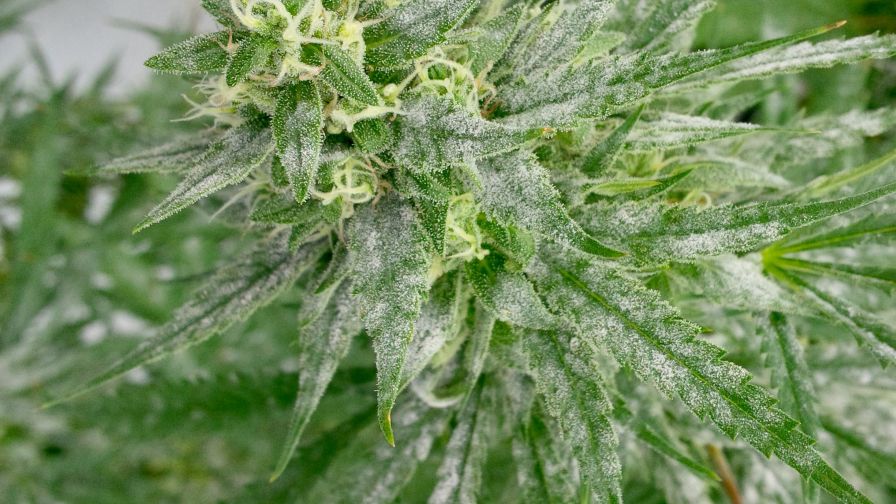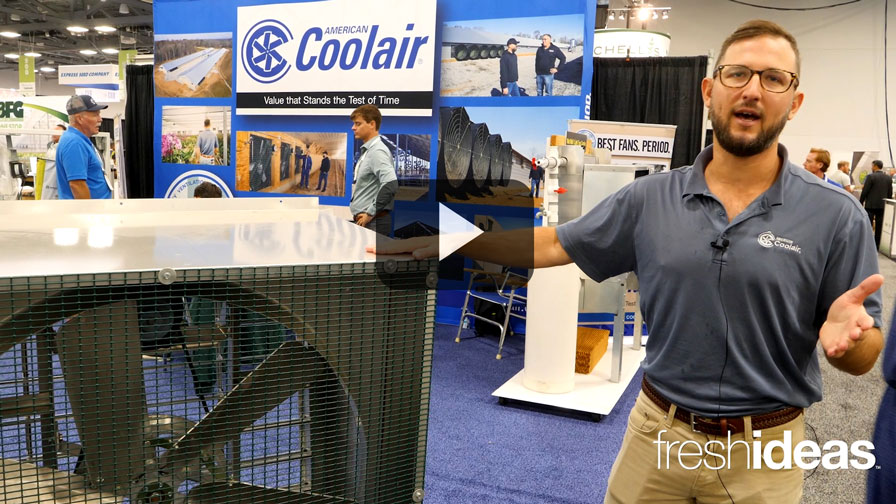5 Tips for Eliminating Powdery Mildew on Cannabis Crops

Powdery Mildew in Cannabis; Photo: Ryan Douglas
In the world of fungi, powdery mildew is unique, and controlling it can prove tricky for commercial cannabis growers. Unlike bud rot caused by Botrytis cinerea, powdery mildew can’t be stopped by simply drying out the atmosphere.
Many growers think of powdery mildew as a dry mold because it can spread rapidly in environments with relatively low humidity levels. This is because the devil is in the details.
Powdery mildew spores don’t require standing water to germinate, only brief periods of high humidity. Temporary environmental fluctuations are all that’s needed for spores to come to life, latch onto the leaf surface, and start sucking energy from the plant.
Preventing the spread of powdery mildew must involve a multi-faceted approach that attacks the issue from several different angles. Consider these five tips to help keep your crop clean of this troublesome disease.
Avoid Extreme Temperature Fluctuations
Day and night temperatures should not fluctuate more than about 15°F. The optimal temperature range for cannabis production lies between 68°F and 85°F, but the tighter the variation, the less susceptible your crop will be to powdery mildew attacks.
These fluctuations are one of the most significant contributing factors to disease infection for indoor grow operations. When lights shut off, temperatures can plummet for a short period of time. As temperatures drop, the air holds less water, so it is released into the environment. This can result in micro condensation and pockets of high humidity, setting the stage for spore germination. HVAC and dehumidification systems eventually catch up and stabilize the environment, but by then, spore germination has already occurred. Wall-mounted fans help to disperse the spores, and employees that brush up against the plants will inadvertently carry the spores to new spots in the grow room.
Even though the day and night temperatures may be steady, a 45 to 60-minute period of extreme fluctuations can aggravate the onset of powdery mildew infection.
Use Leaf Surface pH as a Weapon
It may be impossible to eliminate powdery mildew spores from the environment, but at least growers can make it more difficult for infections to take hold. The success of powdery mildew closely depends on the pH of the leaf surface, so raising or lowering this value can disrupt its ability to become established in the crop.
The application of products containing potassium bicarbonate will temporarily raise leaf surface pH, while products that contain sulfur will drop it. Although these products are approved for organic production, it is preferable not to use them on fully flowering plants. If you anticipate powdery mildew problems, consider using these products preventatively up to the second week of flower. Beyond this point, the application of these products could negatively affect the finished quality of your cannabis.
Fight Nature with Nature
Biofungicides are another organic method of preventing powdery mildew outbreaks.
Products that contain Reynoutria sachalinensis use an extract of giant knotweed to trigger the plant’s natural defense mechanisms and produce disease-fighting biochemicals. This induced disease resistance is not systemic, meaning that only the treated area of the plant is protected. Still, it is translaminar, meaning that if sprayed on the top of the leaf surface, the bottom of the leaf will be protected as well.
However, new plant growth is not protected, so the product must be reapplied on a seven- to 14-day schedule. Although biofungicides can be a powerful addition to a grower’s disease-fighting toolkit, make sure to verify that the use of fungicides — even organic ones — are permitted for use on your cannabis crop.
Filter Out the Problem
Most indoor cultivation sites do not circulate air between individual rooms, but even closed-loop ventilation systems can perpetuate powdery mildew outbreaks by dispersing spores throughout the grow room. Installing air filters with a MERV rating of 9 or higher can help capture mold spores and prevent them from being re-introduced into the cultivation area. Have your HVAC technician install these filters in the air handling system and be strict about cleaning or replacing them on a set schedule.
With Severe Infestations, Cut Your Losses, Not the Leaves
When powdery mildew is first spotted in a crop, it makes sense to remove the affected leaves. But if none of the previous four recommendations are followed, it’s unlikely that an outbreak will improve through leaf removal alone. With heavy infestations, removing leaves can actually make the problem worse.
As workers pluck leaves, they inevitably cover their hands with spores and spread them through the crop every time they touch a plant. With severe infestations, this activity spreads as many spores as it removes. Furthermore, if the defoliation is extreme, the mildew will spread to the only part of the plant that remains to be infected — the flowers.
Maintaining a crop that is heavily infested with powdery mildew will place the rest of the cultivation facility at risk. Sometimes it’s better to scrap the crop instead of providing life support until harvest day. Cutting down a damaged crop hurts, but infecting the entire facility will prove much more painful.
As with any disease, prevention is key. Since cannabis cultivators can’t rely on conventional fungicides to protect their crops, growers must be creative as they fight the good fight.









